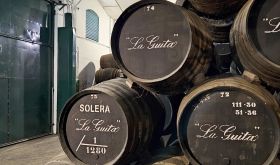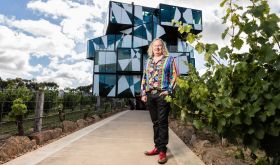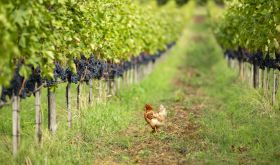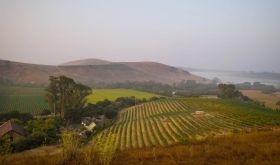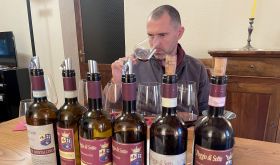4 June 2021 A stonking red wine bargain – perfect for barbecues.
From €9.90, 14 Swiss francs, $16.49, £13.48, AU$30, RMB175, HK$249, 278 Norwegian kroner
As you can see from the list of currencies above, this delicious bargain is delightfully easy to find. According to Wine-Searcher.com, it’s sold by a wide array of American retailers as well as in Germany, France, Switzerland, Norway, China, Hong Kong and Australia. In the UK the sole stockist of the 2018 is Lay &Wheeler, but the 2019 (which is much chewier and more youthful) is available from all these British wine merchants: Lay & Wheeler, Vinatis, Swig, Averys/Laithwaites/The Sunday Times Wine Club, Haynes Hanson & Clark and Tannico (who tend to list virtually everything). I’d have thought the 2019 is definitely worth taking a punt on since we have consistently scored vintages of this wine 16.5/20, with the sole exception of the 2017, but I'd cellar the 2019 for a while before drinking it.
Burgundy-trained Stéphane Ogier is a bit of a northern Rhône wunderkind. He joined his father Michel in 1997 to work the family vineyards and has built a glamorous new winery just south of Ampuis overlooked by the steep Côte Rôtie terraces (see the picture below taken by Richard when tasting 2017s chez Ogier in Ampuis). But he has now built a second winery in the southern Rhône to make wines like Le Temps est Venu without having to ship the grapes too far. In his note on the front label of my wine of the week he suggests, ‘Le temps est venu de vous faire partager ma nouvelle histoire’ (the time has come to share my new story with you).
This rich-but-fresh southern Rhône red is blend is of about 60% Grenache and 40% Syrah from vines substantially grown in Violès on Le Plan de Dieu (see main image above) supplemented by some from Visan. Soils are a mixture of limestone and blue clay. Average vine density is 7,000 vines per hectare with the average age a very heartening 30 to 50 years. Vines are hand-harvested – yields averaging 40 hl/ha – before being sorted in both vineyard and cellar.
In the cellar the whole bunches are spontaneously fermented in concrete and aged for a further 10 months in concrete tanks. (Grenache is no friend of oak, especially not new oak.) Ogier suggests this wine can be aged for five to eight years – pretty impressive for a wine at this price. Of course it is easy to find red Côtes du Rhônes cheaper than Le Temps est Venu – but it’s also easy to find wines labelled Châteauneuf-du-Pape that are much more expensive and very much less satisfying.
My tasting note for this 2018:
Transparent ruby with a very shaded rim. Heady and meaty and very much more an old-vine Grenache than a generic Côtes du Rhône. Admirable freshness as well as all that rich, ripe but subtle fruit with a little fine tannin on the finish. There’s a bit of heat on the end but it’s not a besetting sin in this case. A really admirable representative of this appellation. There’s both herbs and spice in this. Really precisely made. Tasting this, you wonder who needs a Châteauneuf that won’t be ready for many more years? A great barbecue wine! VGV
There’s no hurry to drink this. I suggested a drinking window of 2020–2024. The 2018, like the 2019, is labelled 14.5% alcohol but is not aggressively potent.
Ogier suggests he has access to 30 hectares (74 acres) of fruit - no organic claims - so the wine is clearly made in significant quantities. Buy in quantity!
Read in-depth coverage of Rhône 2018 and Rhône 2019 on JancisRobinson.com.



